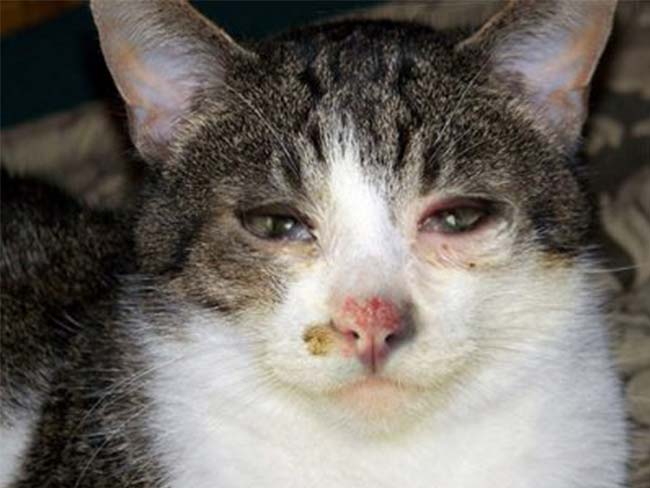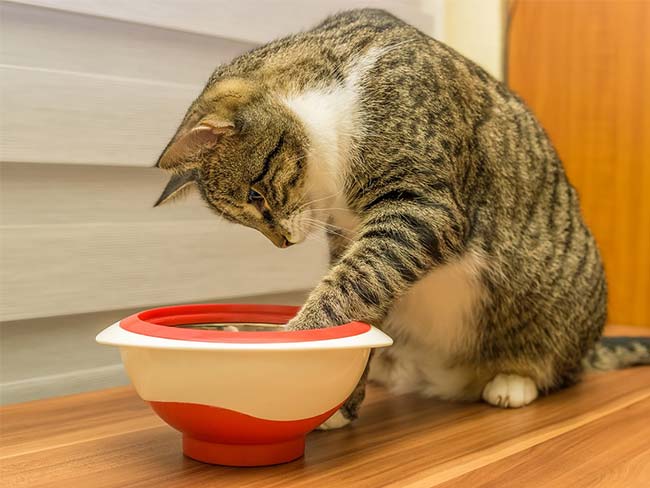What are Cat flu & FPV?
“Cat flu” is a general term used to describe upper respiratory infection in cats which caused by one or more viral or bacterial agents. The two main causes are Feline Herpesvirus (FHV) and Feline Calicivirus (FCV). The virus is very species specific and is only known to cause infections in cats’ family, but not in humans.
The main viruses and bacteria that cause upper respiratory infection in cats are highly contagious. An infected cat will shed contagious particles in saliva or secretions from the nose or eyes. Susceptible cats can get an infection by direct contact with another infected cat or by environmental exposure to objects that have been contaminated with infectious secretions such as food and water bowls, litter boxes, toys, and bedding.
“Feline parvovirus (FPV)”, also known as feline panleukopenia Virus. It can cause severe illnesses in cats, particularly kittens. FPV is a highly infectious and fatal viral disease, but it does not affect humans or dogs.
The virus is extremely resilient and can survive in the environment for long periods of time. Sadly, this disease has a very high mortality rate and occasional outbreaks are still seen in some multi-cat situations such as households with unvaccinated cats, breeders or catteries.
The symptoms
Cat Flu |
FPV |
|---|---|
|
(Not all cats infected with FPV show signs but if they do, it include the following:)
|


Treatment
Cat flu
The primary causes of cat flu are viruses, for which no licensed drug treatments are currently available. Treatments are aiming at supporting the cat and treating any secondary bacterial infections.
The infections will usually be treated symptomatically. Your vet may prescribe medication depending on the patient’s condition, such as antibiotics to protect against or treat secondary bacterial infections, antiviral and immune system stimulating drugs, medications to decrease nasal blockage, eye drops and vitamins. Also, Cats with nasal or airway congestion may benefit from increased environmental humidification and nebulization does help. If a cat is very poorly and unable to eat, hospitalization may be necessary.
FPV
As for most viral diseases, there is no specific treatment for FPV. Antibiotics do not kill the virus, but are helpful in controlling the secondary bacterial infections that commonly develop due to the lack of white blood cells and the resulting reduced immunity. Dehydration and shock are life-threatening components of FPV and intravenous fluid therapy and intensive nursing care is critical. If the cat receives aggressive supportive care through the initial stages of illness, prognosis for a full recovery is good.
Due to the difference of clinical signs, it’s recommended to see vet to find the best possible care for your pet.
The possible outcome
Cat flu
This disease is not usually serious in healthy cats. As with human colds, most cats will recover well after they received suitable treatment. But it’s dangerous and even fatal in kittens, elderly cats or any cats with underlying illnesses. Due to their weakened immune system, the virus can affect the whole body and may lead to death.
The majority of cats that recover from acute illness become carriers. When stressed, these carriers can shed the virus and they may get sick again.
FPV
Feline parvovirus causes severe damage to the lining of the intestines and travels via the blood to the bone marrow and lymph glands. Viral replication at these sites leads to a marked depletion of white blood cells.
White blood cells play a major role in immunity and are important in defending against infections and diseases. Affected cats can be extremely vulnerable to other infections due to the major decrease in the amount of white blood cells and unfortunately in some cases, sudden death may be the only sign of FPV.
Vaccination is the most effective way to prevent Cat flu and FPV. Discuss with your veterinarian if you have any concerns with vaccinating your cats.
Please contact us for more advice, or make an appointment for vaccination.
